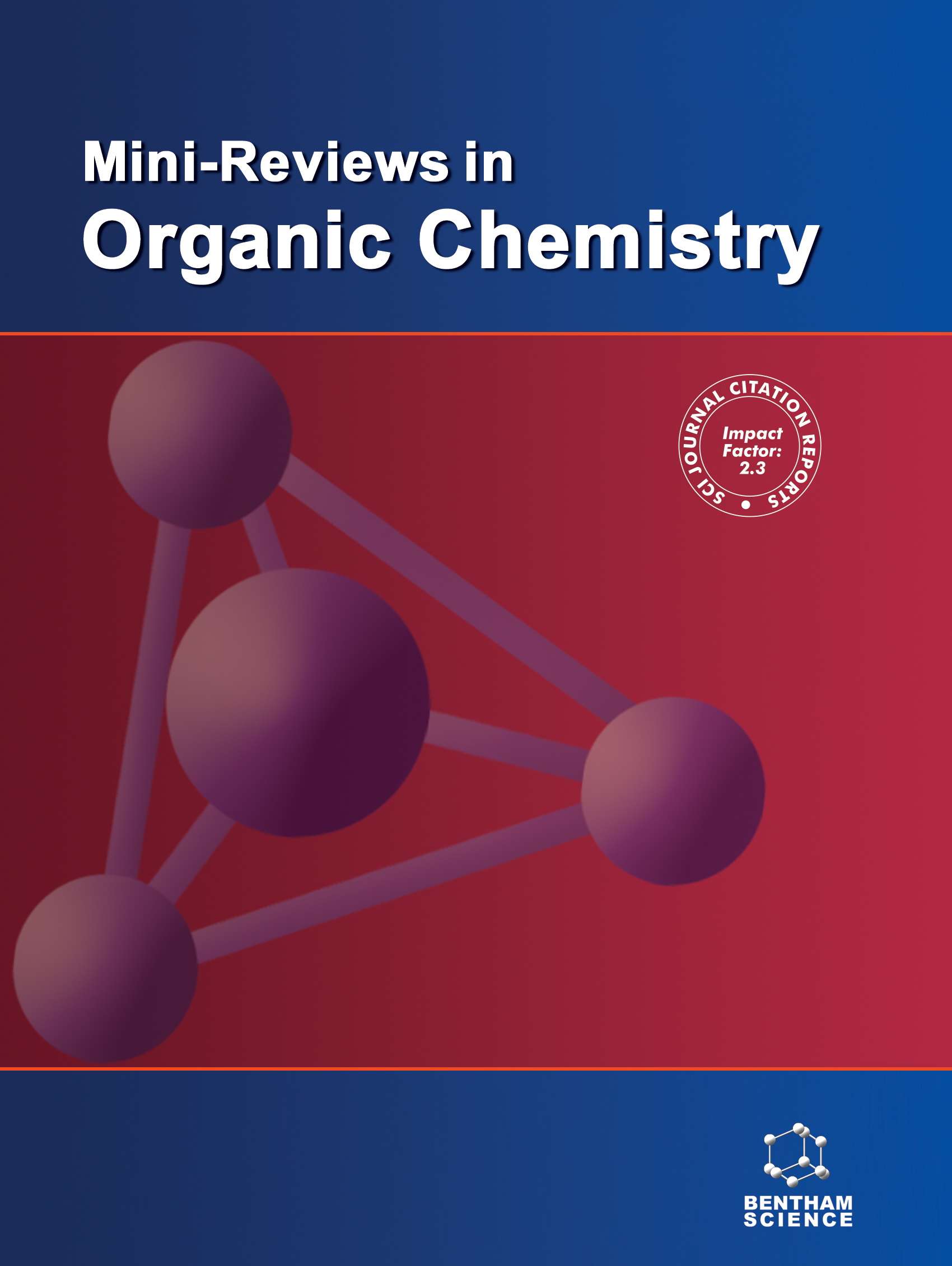Mini-Reviews in Organic Chemistry - Volume 3, Issue 3, 2006
Volume 3, Issue 3, 2006
-
-
Mechanistic Aspects of the Ketene-Imine Cycloaddition Reactions
More LessAuthors: Alessandro Venturini and Javier GonzalezThe [2+2]-cycloaddition reaction of imines with ketenes, also known as Staudinger reaction, is one of the most commonly employed synthetic entries to the β-lactam ring. Despite this, the detailed mechanism of this reaction has remained an open debate for many years. However, the application of theoretical methods has allowed a deeper understanding of many intricacies surrounding the Staudinger reaction. The experimental evidence and the theoretical studies carried out on the Staudinger reaction mechanism, using ab initio and Density-functional theory methods, are reviewed. Special emphasis is placed on the competition between the concerted and stepwise reaction pathways and the origin of the stereoselectivity of the reaction.
-
-
-
New Applications of Phase Transfer Catalysis in Organic Synthesis
More LessThe review will focus on recent applications of phase transfer catalysis (PTC) in organic synthesis. New developments in the synthesis of chiral phase transfer catalysts and their application in a variety of asymmetric transformations will be covered. In addition, new applications of achiral catalysts will be presented.
-
-
-
Calixarenes Enhanced as Dendrimers. A Mini Review
More LessAuthors: Lassaad Baklouti, Najah Cheriaa, Mouna Mahouachi, Amel Ben Othman, Rym Abidi, Jong Seung Kim, Yang Kim and Jacques VicensThis mini review focuses on the synthesis of hyperbranched and dendrimers made of calix[4]arenes and thiacalix[4]arenes taken from literature. At the same time it places our investigations of calixdendrimers within the context of extant literature.
-
-
-
C7-Substituted Estranes and Related Steroids
More LessC7-substituted steroids, especially C7-substituted estradiol derivatives, have been the subject of intensive interdisciplinary studies encompassing the fields of chemistry, biochemistry and medicine. While showing the more pertinent structures with their physiological characteristics, this review will focus on the synthetic approaches to these molecules.
-
-
-
Understanding Organic Processes in Ionic Liquids: Achievements So Far and Challenges Remaining
More LessAuthors: J. B. Harper and M. N. KobrakThe use of ionic liquids as alternatives to traditional molecular solvents is a rapidly expanding field. Their many advantages, including negligible vapor pressures, tunable miscibilities and the ease of product isolation, mean that they have been considered (and shown to be effective) as solvents for a range of reactions. However, the outcomes of many of these organic processes differ on changing solvent to an ionic liquid. For these ionic liquid media to be truly considered as alternative solvents, these differences must be understood. This article seeks to extend this understanding by reviewing the variations in the outcome of organic processes along with the fundamental physical properties of ionic liquids that differ from molecular liquids. A case study on nucleophilic substitutions is used to demonstrate the usefulness of our approach.
-
Volumes & issues
-
Volume 22 (2025)
-
Volume 21 (2024)
-
Volume 20 (2023)
-
Volume 19 (2022)
-
Volume 18 (2021)
-
Volume 17 (2020)
-
Volume 16 (2019)
-
Volume 15 (2018)
-
Volume 14 (2017)
-
Volume 13 (2016)
-
Volume 12 (2015)
-
Volume 11 (2014)
-
Volume 10 (2013)
-
Volume 9 (2012)
-
Volume 8 (2011)
-
Volume 7 (2010)
-
Volume 6 (2009)
-
Volume 5 (2008)
-
Volume 4 (2007)
-
Volume 3 (2006)
-
Volume 2 (2005)
-
Volume 1 (2004)
Most Read This Month


